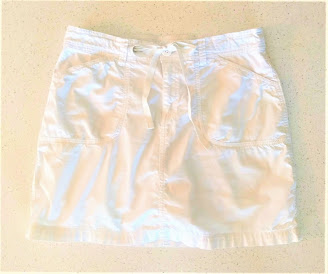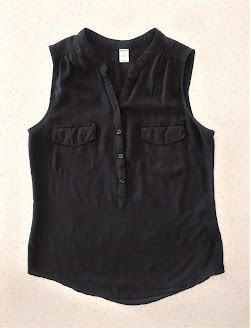There is almost always a tension between time and money. On one end of the spectrum you can save a lot of time by hiring a personal stylist to select, purchase and alter clothing tailored for you. On the other end of the spectrum, if you are willing to spend some extra time shopping and doing some minor alterations, you can create (I believe) an equally nice wardrobe that is orders of magnitude less expensive.
Since you can't specify the exact piece you want in your wardrobe when you buy used clothing, you need to have a broad plan or template in mind, then you can shop for the basic pieces to fill in the gaps.
Assuming you're on board with spending time instead of money, here are some considerations as you curate and build your own seasonal wardrobe:
Step One - Start with pieces you already own.
Visit your closet and pull out the pieces you want to work with. As an example, I recently retired, it's summer in Phoenix, and I wanted to expand my wardrobe of casual summer clothing that would be a step up from jeans and a tank top. However, I knew that my blue jeans (purchased at Goodwill!) would be a key piece of my new wardrobe, so I pulled them out:
Next, I pulled out three sleeveless tops that I knew would also fit the bill (also purchased from Goodwill)
Now I just needed to think about the pieces I wanted to fill in with. Because it's SO hot in Phoenix, even wearing jeans can be uncomfortable, so I knew I wanted three more bottoms (shorts and/or skirts) and three more nice tops. Since I already had pieces that I was working with, I wanted the new pieces to integrate well.
Step Two - Decide on your color scheme
It's important to know in advance what colors you want to work with, otherwise you'll be overwhelmed by the sheer number of tops on offer at Goodwill. I decided that I wanted white or denim bottoms and some print or floral tops to break up the monochrome tops I'd already selected. Because I own a pink sweater that I like, I decided that I'd like tops that would go with blue jeans, but that might include some pink.
Step Three - Determine what and how many additional pieces you want
It may be that as you go through your closet you only need one or two new pieces to really pull a wardrobe together. You may realize that a top you never wear just needs a simple alteration for you to feel good about wearing it. I decided that I wanted three more tops and three more bottoms to complete my casual summer wardrobe. In addition to the color scheme I'd chosen, I decided I would only consider sleeveless tops and shorts or casual skirts for the bottoms.
Step Four - Shop for only one or two pieces at a time
Through trial and error, I've found that I get the best results when I shop for only one or two items at a time rather than trying to get all the pieces on one trip. This is the trade-off between time and money I described above, and it gives me an opportunity to live with the new item, work it into my current wardrobe, and get clearer about the next piece I want. Part of the fun of shopping this way is being taken by surprise and discovering a piece you might have previously overlooked fits your parameters perfectly.
Below are the pieces I selected for my new casual wardrobe, all purchased at Goodwill unless otherwise noted. I've also included the cost for each (please note that items are NOT for sale):
$4.29
$6.29 (necklace already owned) $9.99 (purchased at a consignment shop)

$6.29
$6.49 $6.29
The blue utility skirt is an example of a choice that took me by surprise. I was looking for nice denim skirts and shorts, but I realized that the color of this skirt was close enough to blue jeans that it would work.
I made four separate trips over the course of two weeks to build this wardrobe, spending about two and a half hours shopping and approximately 35 minutes making an alteration to one of the items I purchased. All of the tops, new and old, work with all of the bottoms, giving me a variety of casual summer outfits with just ten pieces. Total cost for new pieces: $39.64!









This is GREAT advice!
ReplyDelete